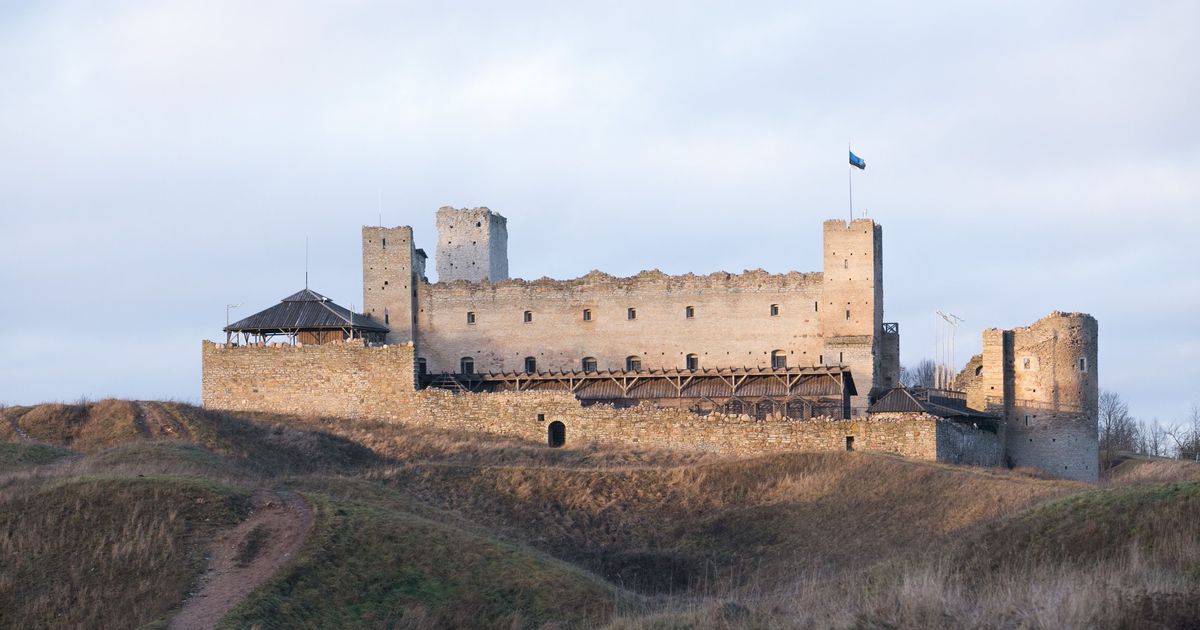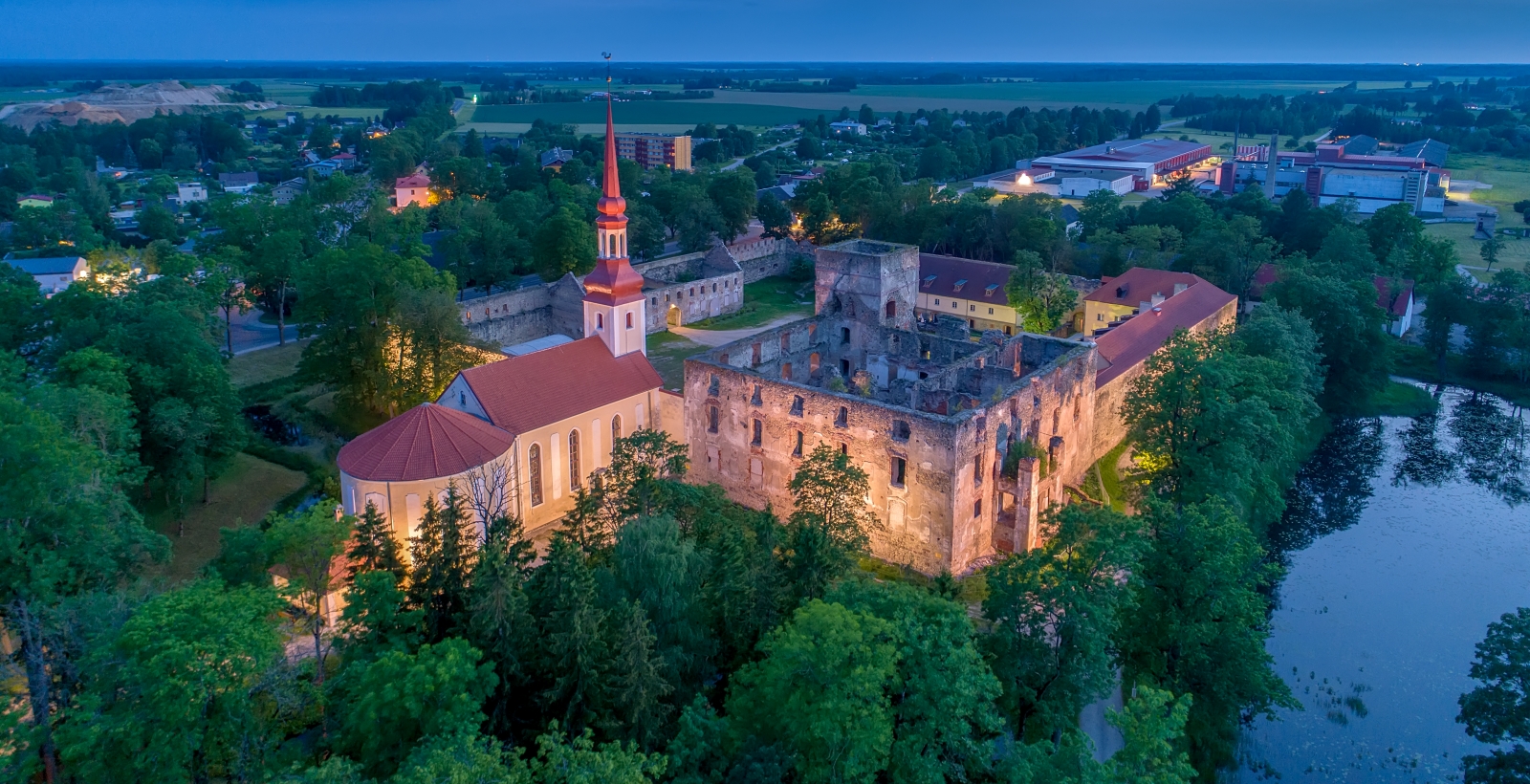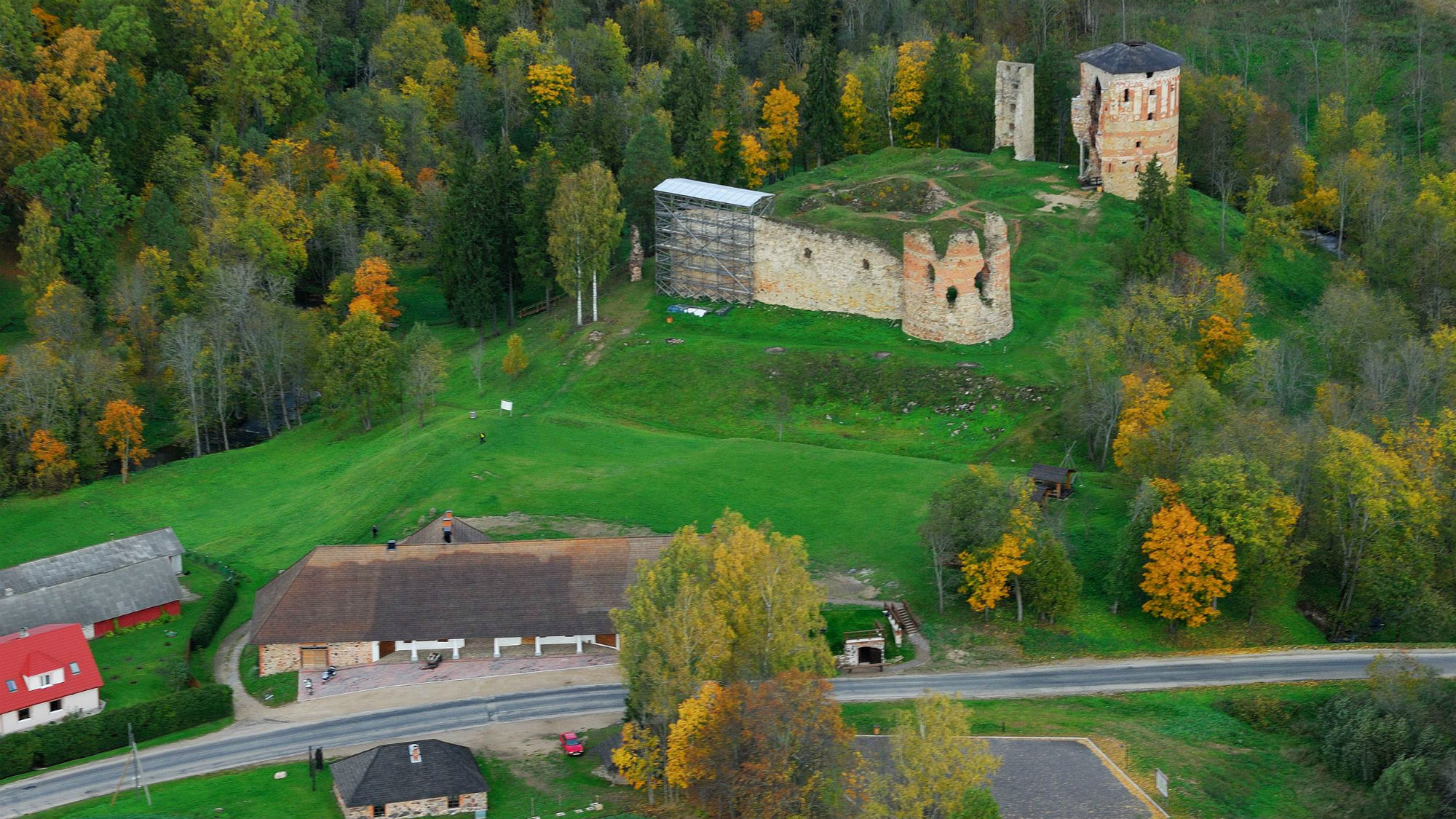Chapter 3.2: Castles
Mediaeval Estonia was covered by a dense network of castles. If one does not include smaller fortified positions, there were about 50 in total. Most castles were constructed immediately after the land was conquered, in order to keep the area under control. Many were built in the same location as the ancient Estonian fortresses.
Castles acted both as local military outposts as well as the centre of local power and administration, where the residence of the seignor and their court was located. About half of the castles belonged to the Order or the bishops, the second half belonged to their vassals.
Some surviving examples:
 Kuressaare (Arensburg) castle, belonged to the bishop of Ösel-Wiek.
Kuressaare (Arensburg) castle, belonged to the bishop of Ösel-Wiek.
 Haapsalu (Hapsal) castle, belonged to the Bishop of Ösel-Wiek.
Haapsalu (Hapsal) castle, belonged to the Bishop of Ösel-Wiek.

Rakvere (Wesenberg) castle, belonged to the Order.
Hermanni castle, belonged to the Order.
 Koluvere (Lode) castle, belonged to the Bishop of Ösel-Wiek.
Koluvere (Lode) castle, belonged to the Bishop of Ösel-Wiek.



Põltsamaa (Oberpahlen) castle, belonged to the Order.
 Vastseliina (Neuhausen) castle, belonged to the Bishop of Tartu. Then and now.
Vastseliina (Neuhausen) castle, belonged to the Bishop of Tartu. Then and now.
Other castles have been reduced to rubble, like Viljandi.
Some surviving examples of castles, which belonged to the vassals:
Purtse (Isenhof) castle.

Vao (Wack) tower-castle.

Kiiu tower-castle.
Little is known about life inside the Livonian castles. At first life in the castles of the Order probably resembled life in a monastery. The members of the order slept and ate together, only the head of the castle had his own room. They also had specific times during the day, which were meant for prayers. However, as time went on, these rules were not followed as strictly. By the late mediaeval era, most knights did not live inside castles, but on their own private estates in the countryside.
Comments
Post a Comment